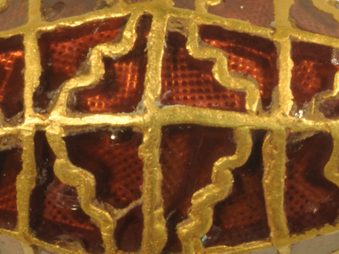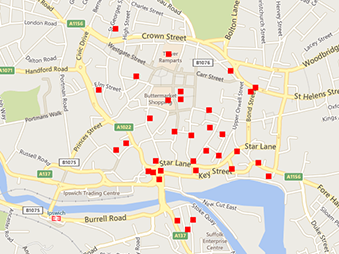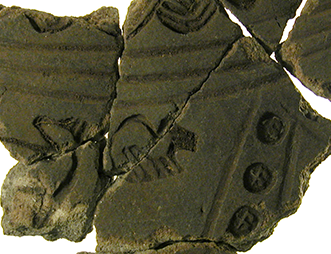As part of the Rendlesham Revealed project, Suffolk County Council Archaeological Service worked with volunteers to build and fire an Anglo-Saxon Ipswich ware kiln to make replica Ipswich ware pots. This experimental archaeology project aimed to use the archaeological evidence to attempt to manufacture Ipswich ware pottery, with the same form and fabric as contemporary examples, using a kiln based on excavated examples from Ipswich.
Leading this project is Keith Wade (retired county archaeologist and specialist in the Anglo-Saxon archaeology of Ipswich) and Duncan Allan (Hands on Heritage). We are also extremely grateful for the expertise and hard work of the volunteers from the Anglian Potters.
Materials have been sourced locally for this project. London Clay has kindly been donated to the project by Tarmac. Boulder Clay has been sourced from Bulmer Brick and Tile Company.
Explore the resources on this page to discover more about the different stages involved in building and firing the experimental kiln, which took place at Hands on Heritage in Suffolk in 2022-2023, including a video, photo gallery and blog series.
Experimental Kiln on Film
This video and music were made by volunteers from Hands on Heritage and filmed in April 2023
Archive Report: An Experimental Ipswich ware Kiln
This archive report documents the experiments, processes and learning involved with building and firing the replica Ipswich ware kiln and making replica pots.
Download PDF (4.4mb) »Being Anglo-Saxon: Blog Series
“Ipswich ware” pottery made for the first time in over 1,000 years
A summary of the project and what happened. For more detailed articles of each stage of the process you can read the articles below.
Read the summary article on our blog »
The experimental work begins
This article briefly explains why this project is happening, the characteristics of Ipswich ware pottery and how is it made, and what is known about the kilns excavated Ipswich.
Read the November article on our blog »
Experimenting with raw clay and pottery making
Volunteer Louise tells us about her experience and the methods she tried with clay processing and making replica Ipswich ware pots.
Read the December article on our blog »
Experimenting with raw local clay and additives
Volunteer Jnanamitra tells us about her experience with clay processing and experimenting with different additives, such as grog and sand, to understand how this would affect the workability of the clay when making pots.
Read the January article on our blog »
Making test bars
Several volunteers made test bars to try to work out the optimum firing temperature of the clay and also to test water absorption. Ruth explains here how she got on.
Read the February article on our blog »
Building the replica Ipswich ware kiln
Over 3 days, the team and volunteers were on-site at the Hands on Heritage experimental archaeology site to begin the building the main structure of the kiln.
Read the March article on our blog »
Loading and Firing the replica Ipswich ware kiln
The team and volunteers returned to Hands on Heritage in Spring 2023 to load the kiln with their beautifully made pots ready to be fired. A dome was built over the pots and then the kiln was lit and fired over night.
Read the final article on our blog »
Experimental Anglo-Saxon Kiln in Pictures
Use the arrows to scroll through the slideshow or view the whole album on flikr.com

Funded by:

We are also grateful for the materials donated by Tarmac and support from Bulmers Brick and Tile Company. Other Rendlesham Revealed project activities receive support from many individuals and organisations, see the Partners and Supporters section


